Retail Analytics Market Size
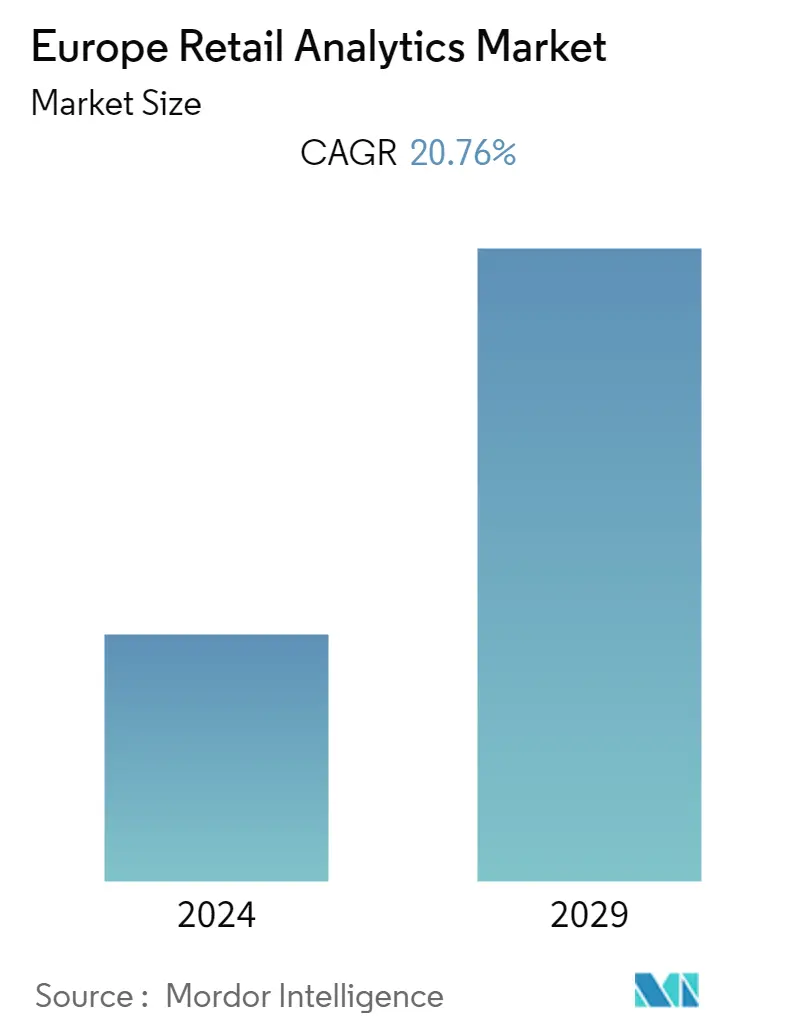
| Study Period | 2019 - 2029 |
| Base Year For Estimation | 2023 |
| Forecast Data Period | 2024 - 2029 |
| Historical Data Period | 2019 - 2022 |
| CAGR | 20.76 % |
| Market Concentration | Medium |
Major Players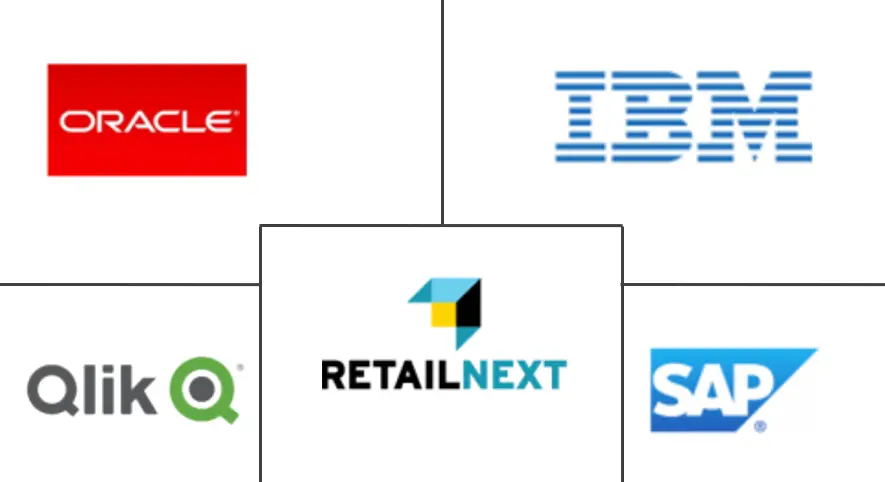
*Disclaimer: Major Players sorted in no particular order |
Need a report that reflects how COVID-19 has impacted this market and its growth?
Retail Analytics Market Analysis
The European retail analytics market is expected to grow at a CAGR of 20.76% during the forecast period. A sustained increase in expenditures in AI-based digital tools to address supply chain irregularities and retail shrinkage will give a huge potential for retail analytics providers. Europe also has many major retail brands and companies that support online presence, which is expected to encourage a lucrative demand for retail analytics in the region.
- The driving factor for using retail analytics in the region is that it provides tangible and practical insights into customer behavior. Retail analytics services are designed to give each consumer tailored attention. Companies have used data-driven retail analytics solutions that keep customers engaged with the company for a longer period in response to changing consumer needs and increasing rivalry among retailers for customer loyalty. Retail predictive analytics allows retailers to evaluate customer data and anticipate client wants and desires.
- Furthermore, from a customer-centric standpoint, implementing a retail analytics strategy is intended to offer businesses the resources and technology required to create and automate seamless consumer experiences across online channels. Customer experiences are improving as more retailers implement customer relationship management (CRM) systems. Furthermore, the increased use of IoT, POS, RFID and other smart devices generates enormous data, which merchants can utilize to find client buying preferences and hidden customer insights. As a result, retailers primarily focus on improving customer experience, which is expected to immediately drive demand for retail analytics services and software in the coming years.
- A retailer's primary resources are product inventory and shelf space allotment. It refers to the use of analytics to decide product offers in the right place, at the right time, and in the appropriate quantity for the right customers. In terms of micro-level analysis and assortment planning, this trend has now become a constant process in the retail industry. Shelf space management is being studied in relation to client preferences in the store and the financial impact of various assortments.
- For instance, Trax Ltd. and Roamler, two European startups, have joined forces to provide shop auditing services to consumer packaged goods (CPG) corporations. Companies constantly capture shelf photos and provide insights about shelf conditions. It improves product availability on the shelf and enables merchants to get timely insights and make decisions to improve shopper experiences.
- Business intelligence tools like decision support systems (DSS) have allowed companies in Europe to produce stress tests and sales forecasts, which are significantly used to assess a company's ability to operate under challenging economic scenarios. Utilizing DSS, companies can perform sensitivity analyses to evaluate the impacts of external variables, such as a possible lockdown or employee sickness, on their operations. Companies that favor data-driven decision-making are more expected to manage the crisis better and recover faster than businesses that do not use analytics and business intelligence.
Retail Analytics Market Trends
This section covers the major market trends shaping the Europe Retail Analytics Market according to our research experts:
Cloud Segment is One of the Factors Driving the Market
- There are various reasons and financial benefits for retailers to have their analytics and BI on the cloud. Some of them are the 24x7 availability of the cloud environment without any infrastructure dependency, the reduction of the time taken to deploy BI components, the flexibility of scaling up or scaling down the infrastructure based on the requirement, and the cost-effectiveness in terms of infrastructure procurement. Additionally, the massive spending on licenses and the support of mobile and web-based remote access to control database access ensure user security and perform analytics.
- Knowing the Total Cost of Ownership (TOC) of the A&BI platform is a significant consideration. A cost comparison that examines the internal costs of infrastructure licensing and support compared to external cloud hosting must be assessed. With SaaS, the total cost of ownership is typically lower due to several factors. First, some SaaS solutions are multitenant platforms that allow several users to share the software's underlying infrastructure. Even though it could be a shared platform, users retain their private and separate information. Second, SaaS analytics and BI platforms don't need the business's servers, hardware, or IT resources to get the software up and running.
- Because SaaS A&BI platforms are automated and ready to use, they have significantly less implementation time- typically a matter of days. SaaS is accessible via standard web browsers, resulting in reduced learning curves and higher adoption rates. Because SaaS solutions are intuitive, self-service, and approachable, they are accessible to all users. On the other hand, implementation of on-premise A&BI infrastructure generally takes months and requires trained employees to extract insights.
- The advantages of cloud solutions over on-premise solutions are expected to drive cloud deployment significantly. Companies that favor data-driven decision-making are expected to manage the crisis better and recover faster than businesses that do not use analytics and business intelligence.
- According to Eurostat, In 2021, the usage of the cloud for e-mail and file storage was still prevalent, with 79% and 66% of organizations utilizing cloud computing, respectively, reporting purchasing these sorts of cloud services. Compared to 2020, the use of e-mail, office software, and accounting and financial apps in the cloud increased moderately (+3 % points for both e-mail and office software and +2% points for accounting applications). The adoption of other forms of cloud services remained relatively constant.
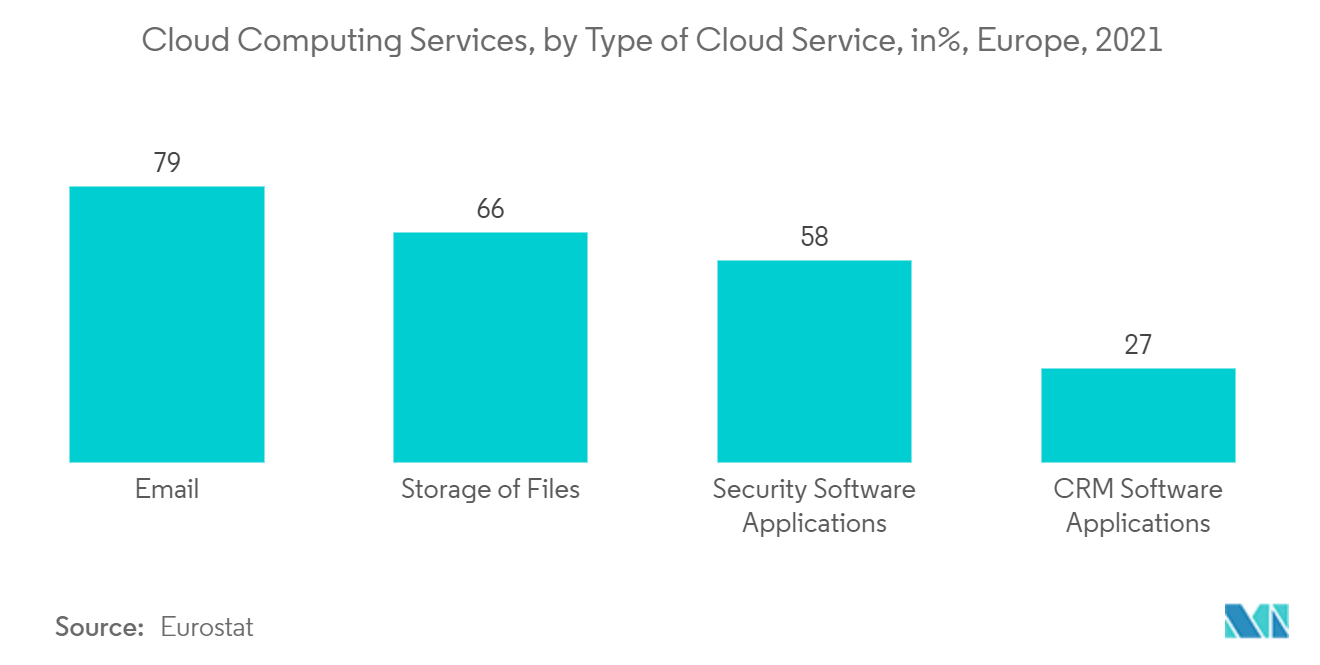
France is Expected to Observe Significant Growth
- Retail businesses in France have to manage an enormous amount of information, from employee information to inventory details and supplier data to customer buying behavior. Every interaction and data point offers an opportunity to make the retail business more efficient and successful. Microsoft's Power BI, a BI tool, records these data points and helps generate actionable insights via its graphical representations of customer trends. Retailers can thus leverage BI data for effectively targeting customers through personalization.
- Moreover, with the rapid rise of e-commerce, business intelligence can track how users interact with e-commerce stores. This information can further enhance the customer shopping and service experience. E-commerce also allows retailers to make smart, efficient decisions based on customer behavior with business intelligence. This data can be viewed in real-time, enabling businesses to adjust prices or alter merchandise offerings quickly.
- Further, according to Eurostat, among people shopping online in France in 2021, 34 % did so once or twice in the three months before the survey. The remaining two-thirds engaged in this activity three or more times during this period.
- According to Retail-Index, The French retail market had 382 separate retailer enterprises across over 20 categories as of February 2021. There were over 130 different stores in the garment industry, with 52 specializing in selling footwear and leather goods. Twenty-eight retail enterprises focused on the food retail sector.
- Targeted offers and predictive analytics enable merchants in France to develop highly personalized offers to all their customers at a very granular level. For instance, retailers can personalize the in-store experience by providing offers to incentivize frequent buying to drive more purchases, thereby achieving higher sales across all their channels. Predictive analytics can be used to upsell or cross-sell a customer.
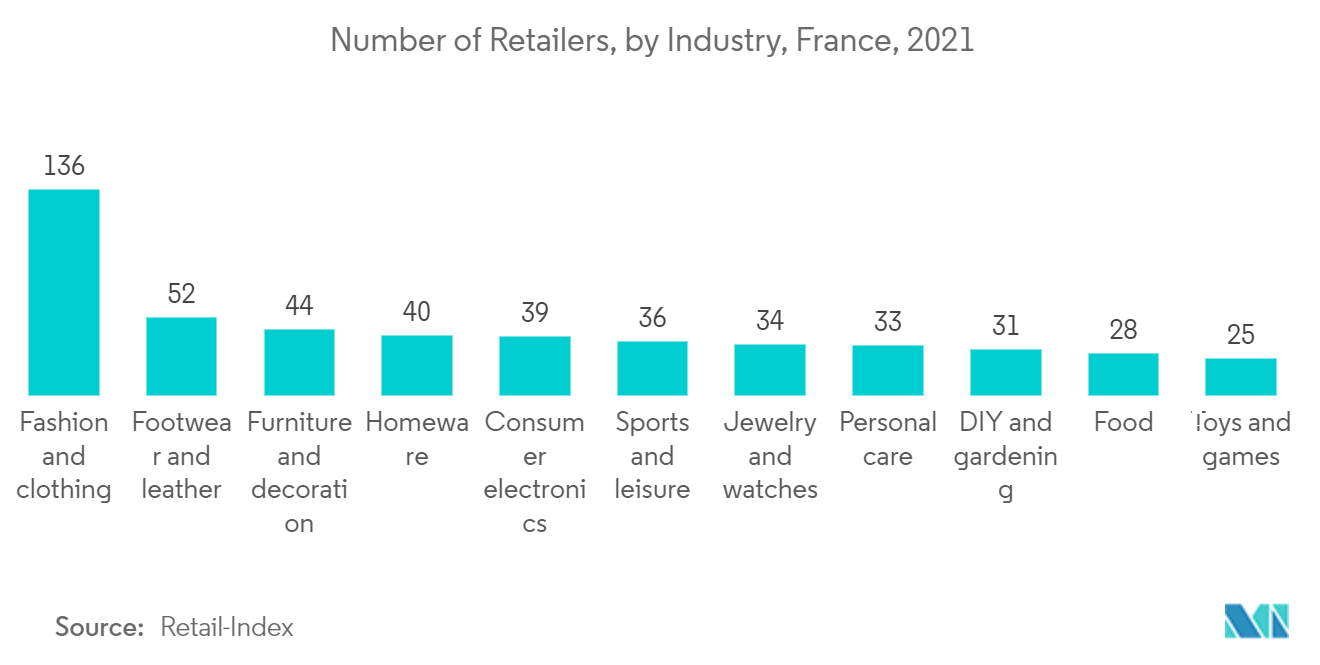
Retail Analytics Industry Overview
The major players operating in the European retail analytics market report are SAP SE, Oracle Corporation, Qlik Technologies, Inc., Zoho Corporation, IBM Corporation, Retail Next, Inc., Alteryx, Inc., Tableau Software, Inc., Adobe Systems Incorporated, Microstrategy, Inc., Prevedere Software, Inc., Targit, Pentaho Corporation, ZAP Business Intelligence, Fuzzy Logix, among other domestic players.
In November 2022, RetailNext announced the acquisition of U.K. rival Retail Performance from market research firm Ipsos to expand its foot-traffic-monitoring platform in Europe and Asia. RetailNext described the transaction as a strategic expansion in the United Kingdom and Europe's retail intelligence area. The company's current monitoring operations log more than 1 billion consumer visits annually across over 4,500 retail locations in 50 countries.
In September 2022, Infosys, a global player in next-generation digital services and consulting, partnered with Microsoft Cloud for Retail. Retail organizations will be able to rapidly reimagine consumer experiences, refresh processes, and amplify systems with cloud and data due to this partnership. Infosys cloud solutions and industry services for retailers would be made available as a Microsoft Cloud for Retail partners, complementing Microsoft Cloud products within Infosys Cobalt.
Retail Analytics Market Leaders
SAP SE
Oracle Corporation
Qlik Technologies
IBM Corporation
RetailNext, Inc
*Disclaimer: Major Players sorted in no particular order
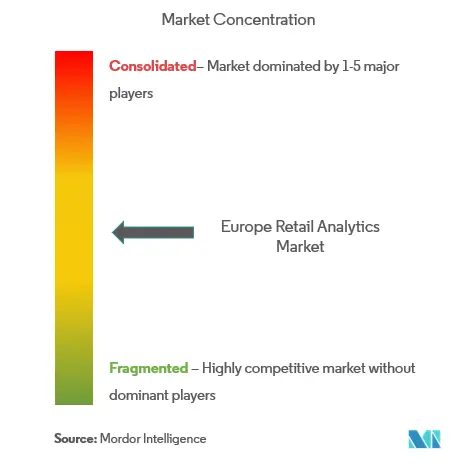
Retail Analytics Market News
- January 2022: dunnhumby, the global player in Customer Data Science, announced a new strategic relationship with SAP, the industry leader in business application software, that will assist retailers in integrating sophisticated customer insights into their marketing and merchandising programs. The collaboration will enable businesses to make faster, customer-driven decisions and provide a more personalized shopping experience in-store and at home.
- June 2022: Lytho Inc. announced the launch of its Creative Window software. The software is being used by retail, higher education, consumer packaged goods, as well as many other industries in the U.S. The company worked with brands and creative teams in the European Union to improve the Creative Workflow solution for the European market.
Retail Analytics Market Report - Table of Contents
1. INTRODUCTION
1.1 Study Assumptions and Market Definition
1.2 Scope of the Study
2. RESEARCH METHODOLOGY
3. EXECUTIVE SUMMARY
4. MARKET DYNAMICS
4.1 Market Overview
4.2 Market Drivers
4.2.1 Increased Emphasis on Predictive Analysis
4.2.2 Sustained Increase in Volume of Data
4.2.3 Growing Demand for Sales Forecasting
4.3 Restraints
4.3.1 Lack of General Awareness and Expertise in Emerging Regions
4.3.2 Standardization and Integration Issues
4.4 Industry Value Chain Analysis
4.5 Industry Attractiveness - Porter's Five Forces Analysis
4.5.1 Threat of New Entrants
4.5.2 Bargaining Power of Buyers
4.5.3 Bargaining Power of Suppliers
4.5.4 Threat of Substitute Products
4.5.5 Intensity of Competitive Rivalry
5. MARKET SEGMENTATION
5.1 By Mode of Deployment
5.1.1 On-Premise
5.1.2 Cloud
5.2 By Type
5.2.1 Solutions (Analytics, Visualization Tools, Data Management, etc.)
5.2.2 Services (Integration, Support & Consulting)
5.3 By Module Type
5.3.1 Strategy & Planning (Macro Trends, KPI, Value Analysis)
5.3.2 Marketing (Pricing, Loyalty and Segment Analysis)
5.3.3 Financial Management (Accounts Management)
5.3.4 Store Operations (Fraud Detection, Workforce Analytics)
5.3.5 Merchandising (Assortment Optimization, Shopper Path Analytics)
5.3.6 Supply Chain Management (Inventory, Vendor and Supply-Demand Modelling)
5.3.7 Other Module Types
5.4 By Business Type
5.4.1 Small & Medium Enterprises
5.4.2 Large-scale organizations
5.5 By Country
5.5.1 United Kingdom
5.5.2 Germany
5.5.3 France
5.5.4 Other Countries
6. COMPETITIVE INTELLIGENCE
6.1 Company Profiles*
6.1.1 SAP SE
6.1.2 Oracle Corporation
6.1.3 Qlik Technologies, Inc.
6.1.4 Zoho Corporation
6.1.5 IBM Corporation
6.1.6 Retail Next, Inc.
6.1.7 Alteryx, Inc.
6.1.8 Tableau Software, Inc.
6.1.9 Adobe Systems Incorporated
6.1.10 Microstrategy, Inc.
6.1.11 Prevedere Software, Inc.
6.1.12 Targit
6.1.13 Pentaho Corporation
6.1.14 ZAP Business Intelligence
6.1.15 Fuzzy Logix
7. INVESTMENT ANALYSIS
7.1 Recent Mergers & Acquisitions
7.2 Investment Outlook
8. FUTURE TRENDS IN EUROPE RETAIL ANALYTICS MARKET
Retail Analytics Industry Segmentation
Retail analytics provides analytics tools to the retail industry on business trends, patterns, and performance. Retail business analytics enable retailers to leverage data-driven insights from their businesses and customers to improve consumer experience, increase sales, and optimize business operations. The retail analysis provides important analytical data for marketing and procurement decisions, such as inventory levels, consumer demand, supply chain movements, and sales.
The Europe Retail Analytics Market is segmented By Mode of Deployment (On-Premise, On-Demand), Type (Solutions, Services), Module Type (Strategy & Planning, Marketing, Financial Management, Store Operations, Merchandising, Supply Chain Management), Business Type (Small & Medium Enterprises, Large-scale organizations), and Country (united kingdom, Germany, France, Others).
The market sizes and forecasts are provided in terms of value (USD million) for all the above segments.
| By Mode of Deployment | |
| On-Premise | |
| Cloud |
| By Type | |
| Solutions (Analytics, Visualization Tools, Data Management, etc.) | |
| Services (Integration, Support & Consulting) |
| By Module Type | |
| Strategy & Planning (Macro Trends, KPI, Value Analysis) | |
| Marketing (Pricing, Loyalty and Segment Analysis) | |
| Financial Management (Accounts Management) | |
| Store Operations (Fraud Detection, Workforce Analytics) | |
| Merchandising (Assortment Optimization, Shopper Path Analytics) | |
| Supply Chain Management (Inventory, Vendor and Supply-Demand Modelling) | |
| Other Module Types |
| By Business Type | |
| Small & Medium Enterprises | |
| Large-scale organizations |
| By Country | |
| United Kingdom | |
| Germany | |
| France | |
| Other Countries |
Retail Analytics Market Research FAQs
What is the current Europe Retail Analytics Market size?
The Europe Retail Analytics Market is projected to register a CAGR of 20.76% during the forecast period (2024-2029)
Who are the key players in Europe Retail Analytics Market?
SAP SE, Oracle Corporation, Qlik Technologies, IBM Corporation and RetailNext, Inc are the major companies operating in the Europe Retail Analytics Market.
What years does this Europe Retail Analytics Market cover?
The report covers the Europe Retail Analytics Market historical market size for years: 2019, 2020, 2021, 2022 and 2023. The report also forecasts the Europe Retail Analytics Market size for years: 2024, 2025, 2026, 2027, 2028 and 2029.
Retail Analytics Industry Report
Statistics for the 2023 Retail Analytics market share, size and revenue growth rate, created by Mordor Intelligence™ Industry Reports. Retail Analytics analysis includes a market forecast outlook to 2029 and historical overview. Get a sample of this industry analysis as a free report PDF download.
